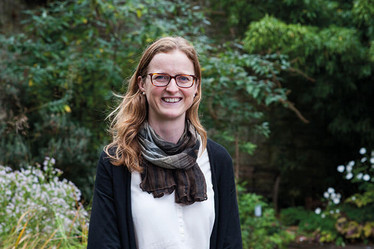Shocking New Therapy
Stroke sufferers may benefit from mild electrical stimulation of the brain

Credit: John Cairns
The road to recovery for victims of stroke can be arduous and involve relearning basic skills and activities. A new study has unveiled results showing that anodal transcranial direct current stimulation (tDCS) – a low electric current delivered via electrodes on the scalp – of a specific brain region can improve the learning ability of stroke patients faster than standard rehabilitation training. To further understand the process, we spoke with co-leader of the study Heidi Johansen-Berg, Director of the Oxford Centre for Functional MRI of the Brain, at the Nuffield Department of Clinical Neurosciences.
How did you come to investigate tDCS in stroke recovery?
We were interested in different approaches to improving stroke rehabilitation, and we were also studying the effects of brain stimulation in healthy individuals, and found that tDCS could improve learning. We see rehabilitation as being similar to learning, in that the patients effectively have to relearn functions that were impaired as a result of stroke. So we hypothesized that if we paired tDCS with rehabilitation, it could potentially accelerate rehabilitation and boost brain plasticity.
We were pleased to see that the benefits of the stimulation group were significant compared to those of the placebo control group. And we were particularly excited to find that those improvements could still be found in the stimulation group three months after the training had stopped.
What has the reaction been like?
Generally, stroke rehabilitation is a slightly neglected area of research, but there’s been a lot of interest. It’s a difficult area to have an impact on because conventional rehabilitation requires one-to-one interaction with a therapist, which is expensive to provide and may result in patients not reaching their full recovery potential.
Could tDCS have potential for brain injuries other than stroke?
Definitely. Any situation where rehabilitation is achieved through training has the potential to benefit from tDCS. If we can understand which brain regions are involved, and target those regions with tDCS while the patient is receiving the training, the effects should be boosted, similar to our results in stroke patients.
What’s next?
The study that we’ve done isn’t big enough to make any firm conclusions about who would benefit from tDCS, so we’d like to carry out a much larger study, which would mean many different centers becoming involved. From there, we could tweak the stimulation for different target groups. For example, focusing on different brain regions or using different patterns of stimulation depending on the patient’s dominant hand.
- C Allman et al., “Ipsilesional anodal tDCS enhances the functional benefits of rehabilitation in patients after stroke”, Sci Transl Med, 8, (2016).
My fascination with science, gaming, and writing led to my studying biology at university, while simultaneously working as an online games journalist. After university, I travelled across Europe, working on a novel and developing a game, before finding my way to Texere. As Associate Editor, I’m evolving my loves of science and writing, while continuing to pursue my passion for gaming and creative writing in a personal capacity.















